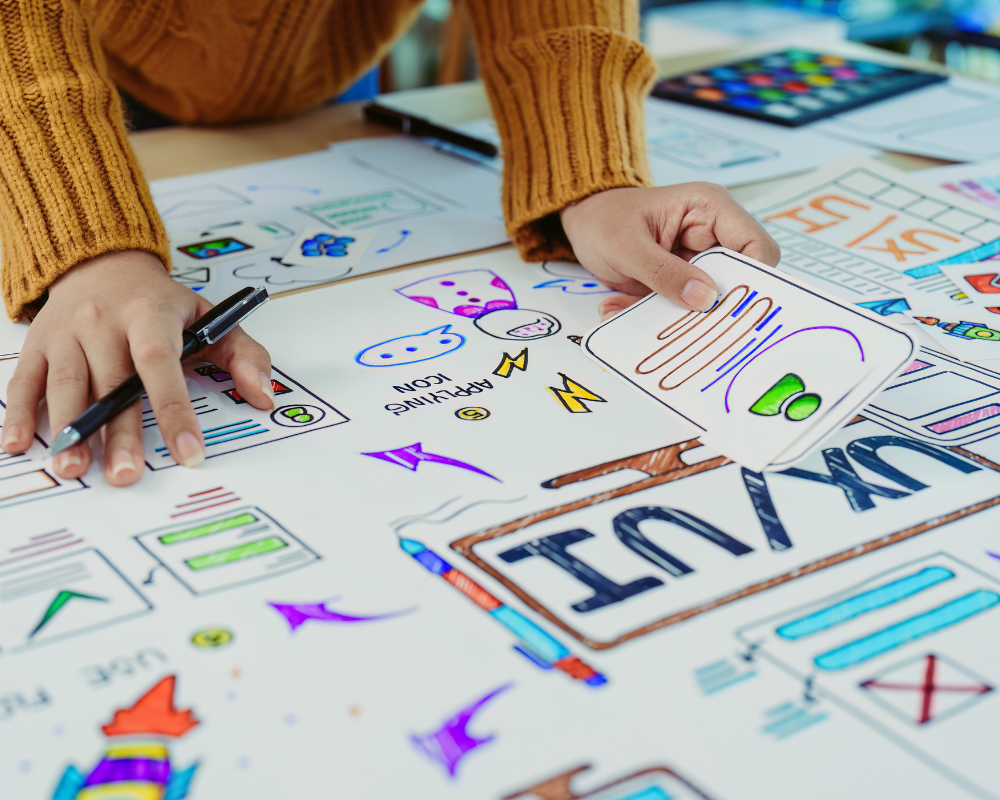While they are disciplines with distinct approaches, their synergy is critical for developing products that not only meet user expectations but also provide an immersive and memorable experience. In this article, we’ll explore how collaboration between UX and UI can lead to standout design, highlighting the keys to achieving a perfect balance between functionality and aesthetics.
UX: The Heart of User Experience
User Experience (UX) encompasses every interaction a user has with a product or service. From ease of navigation to overall satisfaction, UX design focuses on a deep understanding of users’ needs, motivations, and frustrations. Through qualitative research, usability testing, and behavior analysis, UX designers optimize each touchpoint to ensure interactions are smooth, intuitive, and frictionless.
A crucial component of UX design is accessibility, ensuring the product is inclusive and usable by as many people as possible, including those with disabilities. By focusing on usability, UX designers not only reduce friction but also maximize user satisfaction, which in turn contributes to higher loyalty and a positive product perception.
UI: The Visual Identity of the Product
While UX addresses user journey and satisfaction, User Interface (UI) focuses on visual elements and interactivity. This includes everything from buttons, menus, and icons to typography, colors, and overall layout. The goal of UI design is to create an interface that is visually appealing, intuitive, and aligned with user expectations.
UI design is fundamental in shaping the first impression a user has of the product. A visually coherent and attractive design not only captures the user’s attention but also facilitates navigation and enhances the overall experience. In summary, UI is the visual representation of the product and should reflect both the brand’s identity and the user’s expectations.
The Convergence of UX and UI: Key to Exceptional Design
True excellence in digital design lies in the convergence of UX and UI. Although they are distinct disciplines, they are complementary and must work in sync to create a cohesive and functional product.
- Synergy: An effective UI design can elevate a well-defined UX strategy, making interactions not only more engaging but also more intuitive. For instance, a visually clear and well-structured interface can simplify complex processes, significantly enhancing the user experience. Similarly, a strong UX approach can guide the design of an interface that is not only aesthetic but also highly functional and tailored to user needs.
- Collaboration in the Design Process: Collaboration between UX and UI teams is vital from the early stages of development. While the UX team lays the foundation by defining user needs and expectations, the UI team materializes these ideas into an interface that blends aesthetics with functionality. This iterative collaborative process allows for continuous adjustments and enhancements to both the experience and the interface throughout the development cycle.
- Impact on User Satisfaction: An effective integration of UX and UI not only improves usability but also has a direct impact on user satisfaction. A product that combines a seamless user experience with a visually attractive interface is not only more enjoyable to use but also fosters an emotional connection with the user, increasing the likelihood of recommendation and repeat usage.
In the competitive world of digital design, the convergence between UX and UI is essential for creating products that stand out in the market. While UX focuses on designing an experience that is intuitive and satisfying, UI ensures that every visual interaction is coherent and appealing. The key to exceptional design lies in the collaboration and complementarity of these two disciplines, resulting in products that not only meet but exceed user expectations, thereby creating a memorable and satisfying experience.

